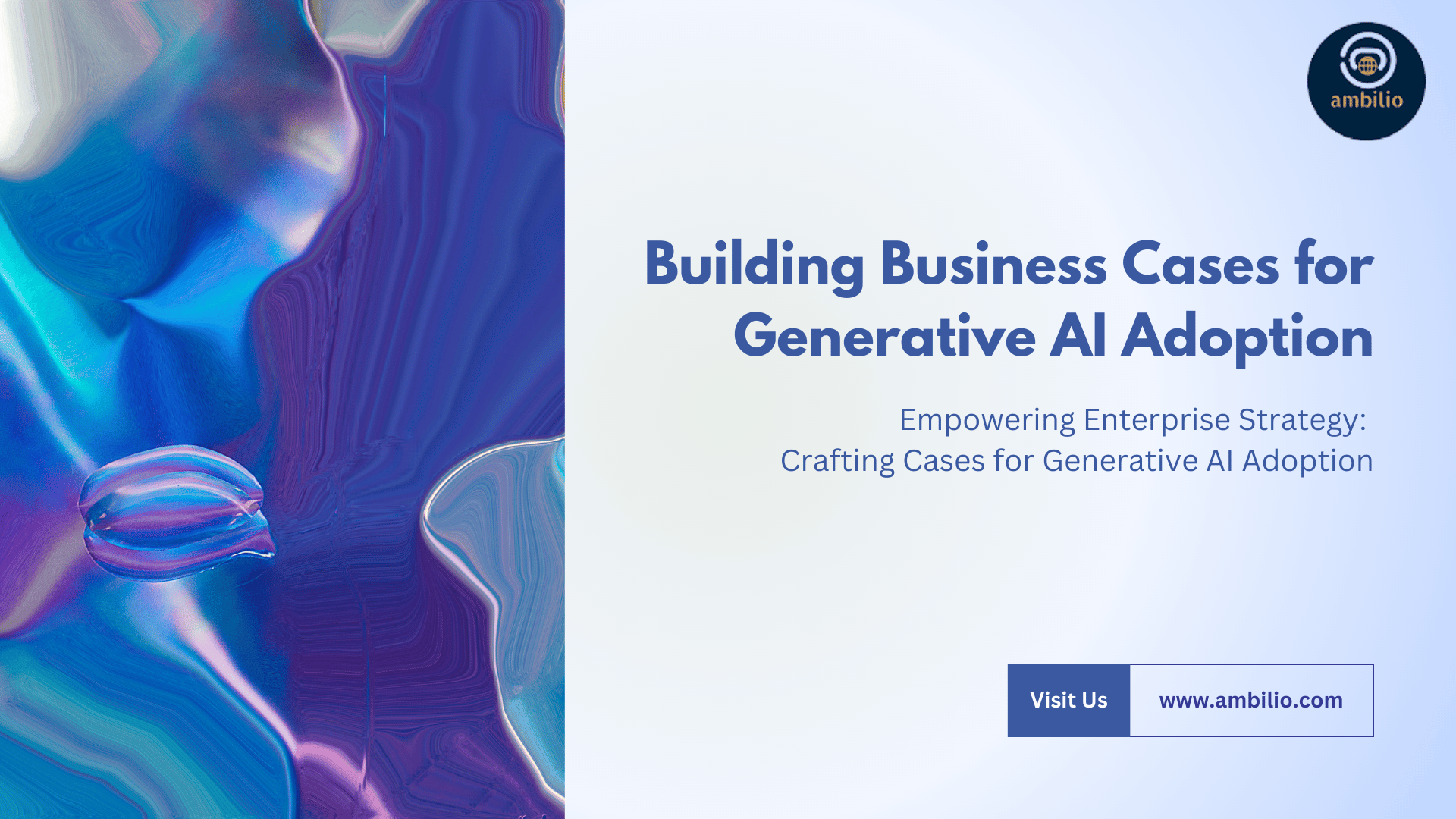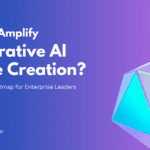Generative AI stands at the forefront of technological innovation, promising transformative benefits across various facets of business operations, ranging from customer service enhancements to streamlined content creation processes. However, despite its potential, securing funding for a Generative AI implementation can pose significant challenges if the benefits are not clearly articulated and quantified. This article explores the essential steps to construct a compelling business case for Generative AI adoption that effectively communicates the value and justifies the investment to stakeholders.
Constructing a Persuasive Business Case for Generative AI Adoption
Building a convincing Business Case for Generative AI Adoption is crucial for organizations aiming to leverage transformative technology effectively. Generative AI offers promising enhancements across various business functions, from customer service to content creation. However, securing funding for its implementation requires clearly articulated benefits and quantifiable returns on investment. Here we outline the key steps to construct a compelling business case that underscores the strategic value of integrating Generative AI into organizational workflows.
Step 1: Define Business Objectives
At the heart of any successful business case lies a clear definition of organizational goals and challenges that Generative AI can address. This initial step involves conducting a comprehensive assessment of existing pain points within different departments, pinpointing areas where automation and data-driven insights can lead to substantial improvements. For instance, Generative AI can automate routine tasks, thereby allowing employees to allocate more time towards strategic initiatives. Additionally, it can offer deep analytical capabilities that enhance the effectiveness of marketing campaigns by providing insights into customer behavior.
Step 2: Identify Key Performance Indicators (KPIs)
To substantiate the benefits of Generative AI in quantifiable terms, it is crucial to identify relevant Key Performance Indicators (KPIs). These metrics should adhere to the SMART criteria—Specific, Measurable, Achievable, Relevant, and Time-bound—aligning closely with the overarching objectives of the organization. For instance, a KPI could be to reduce data analysis time by 30% over the course of a year, demonstrating tangible efficiency gains.
Step 3: Calculate Costs and Benefits
Constructing a robust business case necessitates a meticulous assessment of both the costs associated with implementing Generative AI and the anticipated benefits it brings. Direct costs may encompass investments in software, hardware, and infrastructure upgrades, while indirect costs could involve expenses related to employee training and potential productivity disruptions during the implementation phase. Conversely, benefits may manifest as increased revenues from enhanced sales forecasting accuracy, operational cost savings through task automation, and intangible gains such as heightened customer satisfaction leading to improved retention rates.
Step 4: Develop a Risk Mitigation Strategy
Anticipating and addressing potential risks is pivotal in bolstering the credibility and feasibility of a Generative AI adoption proposal. A comprehensive risk mitigation strategy entails identifying plausible risks, evaluating their potential impact and likelihood, and devising contingency plans to mitigate adverse outcomes. By proactively addressing concerns related to data security, operational disruptions, or integration challenges, organizations can instill confidence among stakeholders regarding their readiness to navigate potential obstacles.
Step 5: Communicate Effectively
Effective communication serves as a linchpin in securing buy-in from decision-makers and stakeholders. Leveraging data-driven insights and illustrative examples, proponents of Generative AI adoption can succinctly articulate its projected impact on organizational efficiency, competitive positioning, and long-term profitability. By presenting a compelling narrative that underscores the alignment between Generative AI capabilities and strategic business objectives, leaders can garner support and facilitate informed investment decisions.
Key Use Cases for Generative AI
Generative AI harbors diverse applications across various industries, each showcasing its potential to drive innovation and operational excellence:
- Automated Customer Support: Generative AI can revolutionize customer service by automating responses to inquiries across various channels such as chatbots and email. By analyzing customer queries in real-time and generating personalized responses, it reduces response times, improves customer satisfaction scores, and allows human agents to handle more complex issues.
- Content Creation and Curation: In content marketing, Generative AI can generate high-quality articles, blog posts, and social media content based on specified topics and styles. It ensures consistency in tone and voice while freeing up human writers to focus on strategic content planning, audience engagement, and creative campaigns.
- Personalized Recommendations: E-commerce platforms can leverage Generative AI algorithms to analyze customer preferences, past purchases, and browsing behavior to deliver personalized product recommendations. This enhances user experience, increases average order value, and boosts conversion rates by presenting relevant items at the right moment in the customer journey.
- Financial Modeling and Analysis: In finance, Generative AI can analyze vast datasets to identify market trends, forecast stock prices, and optimize investment portfolios. By processing financial data swiftly and accurately, it assists financial analysts in making informed decisions, mitigating risks, and maximizing returns on investments.
- Healthcare Diagnostics: Generative AI models trained on medical imaging and patient data can aid in diagnosing diseases such as cancer, identifying anomalies in radiology scans, and predicting patient outcomes. This capability enhances diagnostic accuracy, speeds up treatment planning, and ultimately improves patient care and survival rates.
- Supply Chain Optimization: Across logistics and supply chain management, Generative AI can predict demand fluctuations, optimize inventory levels, and streamline distribution routes. By integrating data from suppliers, manufacturers, and distributors, it minimizes operational costs, reduces lead times, and enhances overall supply chain efficiency.
- Predictive Maintenance: In manufacturing and industrial sectors, Generative AI can analyze sensor data from machinery to predict equipment failures before they occur. This proactive approach minimizes downtime, reduces maintenance costs, and extends the lifespan of critical assets, ensuring continuous production and operational efficiency.
- Legal Document Analysis: Legal firms and departments can utilize Generative AI to review and analyze contracts, legal documents, and case histories. By automating routine legal tasks such as contract drafting and due diligence, it improves accuracy, accelerates document processing times, and allows legal professionals to focus on complex legal strategies and client counsel.
- Art and Design Generation: In creative industries, Generative AI can assist artists and designers in generating innovative designs, artwork, and digital media. Whether in architecture, fashion, or digital art, it sparks creativity, facilitates rapid prototyping, and supports iterative design processes, thereby fostering artistic expression and innovation.
- Educational Content Creation: Generative AI tools can create personalized learning materials, quizzes, and tutorials tailored to students’ individual learning styles and educational needs. By adapting content delivery and assessment based on real-time student performance data, it enhances learning outcomes, supports educators in curriculum development, and promotes engagement in online and blended learning environments.
Final Words
Constructing a compelling business case for Generative AI adoption hinges on a comprehensive understanding of organizational imperatives, strategic alignment of objectives, and proactive risk management. By meticulously delineating the potential benefits and returns on investment associated with Generative AI, organizational leaders can navigate funding challenges adeptly, thereby facilitating a successful implementation that augments operational efficiency and competitive advantage. Embracing Generative AI represents not merely a technological advancement, but a strategic imperative for organizations aspiring to thrive in an increasingly dynamic and data-centric business landscape. Establishing a robust Business Case for Generative AI Adoption ensures clarity and strategic alignment throughout the adoption process, enabling organizations to harness its full potential effectively.



